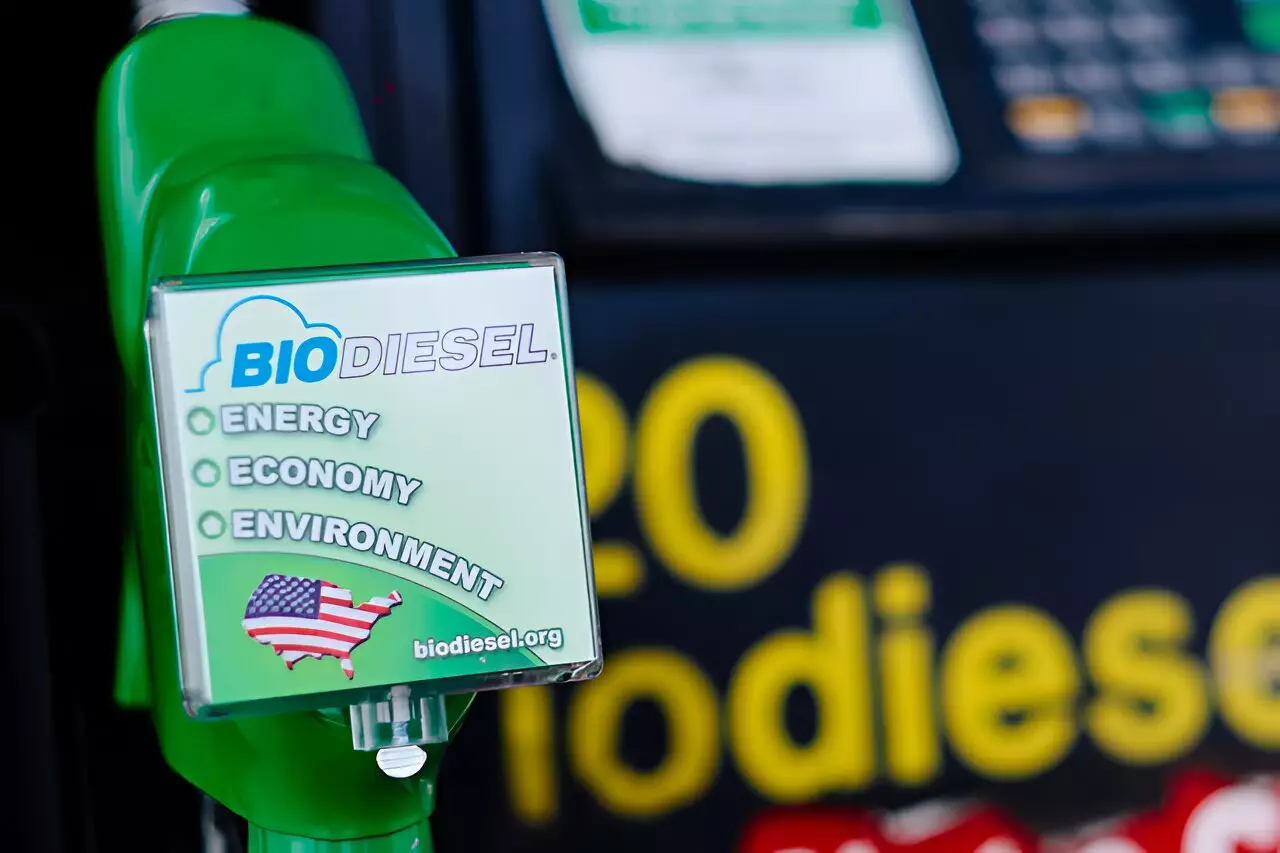The quest for sustainable energy solutions has propelled the exploration of biodiesel, particularly as an effective means to reduce greenhouse gas emissions from the transportation sector. Research conducted by the National Renewable Energy Laboratory (NREL) highlights the significant barriers preventing the adoption of higher percentages of biomass-based diesel blends, which include both biodiesel and renewable diesel. These fuels, derived from organic sources, offer potential reductions in emissions but currently face limitations in blended usage.
Typically, biodiesel blends comprise between 5% and 20% biodiesel mixed with petroleum diesel. However, NREL’s recent findings, as articulated by Senior Research Fellow Robert McCormick, reveal a notable lack of investigation into blends exceeding 20%. The researchers analyzed the viability of increased blends of biodiesel, specifically concentrations of 20%, 40%, 60%, and even 80%. Their conclusions indicate that while these higher blends could significantly mitigate emissions, the automotive industry remains largely resistant to implementing these changes. The reluctance stems from various challenges associated with the properties of biodiesel, particularly when blended at high levels.
As the global focus intensifies on reducing carbon footprints, transitioning to higher biodiesel blends appears essential. McCormick pointed out that according to forecasts, incorporating biodiesel could cut transportation-related greenhouse gas emissions by as much as 86%, a marked improvement over traditional petroleum diesel. Given that sectors such as heavy-duty trucking, marine shipping, and aviation will still require liquid fuels, sustainable alternatives like biodiesel are increasingly relevant. By prioritizing higher blends, the potential environmental benefits could align more closely with the urgent need for clean energy solutions.
Transitioning to biodiesel blends greater than 20% introduces several complexities. One of the primary challenges is that properties of biodiesel start to diverge significantly from those of petroleum diesel at concentrations above 50%. For instance, biodiesel blends are particularly susceptible to issues such as cloud point—the temperature at which wax forms—which can lead to clogged filters and engine failures. At lower concentrations, these risks are manageable; however, as blends increase, the need to reformulate the diesel becomes pronounced.
Significantly, soybean oil, the predominant feedstock for biodiesel in the U.S., has a cloud point around 32°F. This creates substantial hurdles for users in colder climates, where traditional biodiesel could gel and obstruct machinery. Research suggests that blending biodiesel with alternative hydrocarbons, such as kerosene, could effectively mitigate these difficulties. By employing such strategies, industries could enhance cold weather performance while retaining the environmental benefits of biodiesel.
Innovations and Mitigation Strategies
Apart from addressing physical properties like cloud point, other methodologies exist to enhance the stability and performance of high-level biodiesel blends. For example, oxidation stability tends to diminish as biodiesel concentrations increase, yet the incorporation of antioxidant additives can effectively counterbalance this effect. Ongoing research plays a pivotal role in understanding and developing solutions that can further refine the performance of high-blends, addressing both combustion efficacy and emissions control.
Additionally, addressing issues related to engine lubricant contamination and emission control catalysts becomes crucial as biodiesel blends increase. Solutions may involve utilizing additives to optimize fuel properties or rethinking fuel formulations to prevent potential performance detriments. Such research is not merely academic; it provides a critical blueprint for industries aiming to enhance their sustainability practices while maintaining operational reliability.
The data gap that NREL’s study underscores signifies a pressing need for further research into high-level biodiesel blends. As noted in the NREL report, the interplay between biodiesel fuel properties and diesel engine technology warrants detailed exploration. The potential impact of biodiesel on emissions regulations and the performance of existing engine infrastructure cannot be overstated.
Industry stakeholders, policymakers, and researchers must join forces to tackle these obstacles head-on. As biodiesel blends reemerge as potential leaders in the transition to sustainable fuels, comprehensive research initiatives will be essential for not only validating the ecological benefits of biodiesel but also for ensuring compatibility with current technologies.
The future of biodiesel holds promise, but realizing its full potential necessitates overcoming significant challenges associated with higher blends. Industry acceptance hinges on addressing these barriers through innovative approaches that enhance biodiesel properties and applications. With collective effort, higher biodiesel utilization can emerge as a cornerstone in the fight against climate change, ushering in a new era of clean transportation solutions.

